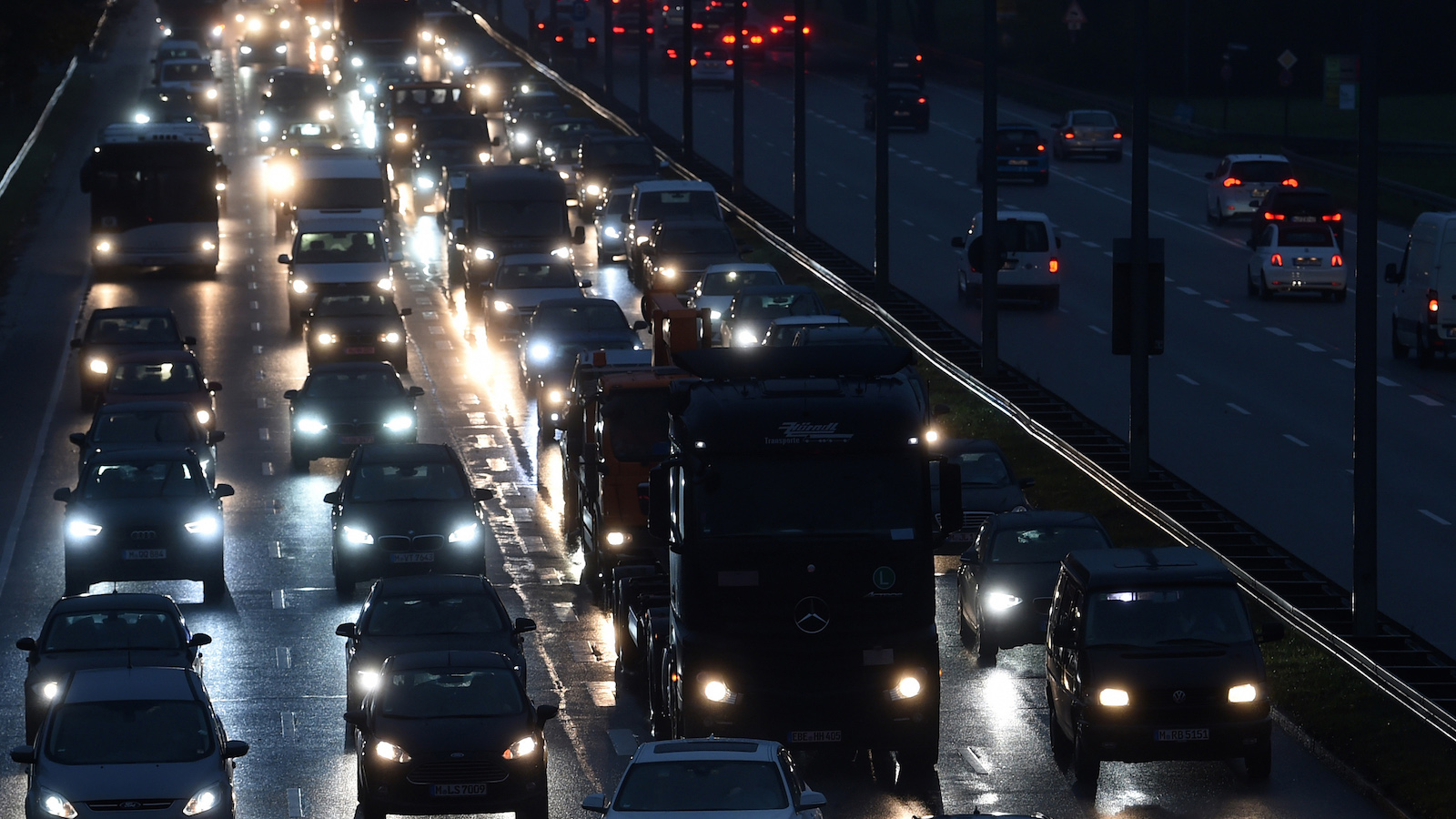This story was originally published by New Republic and is reproduced here as part of the Climate Desk collaboration.
Germany was supposed to be a model for solving global warming. In 2007, the country’s government announced that it would reduce its greenhouse gas emissions by 40 percent by the year 2020. This was the kind of bold, aggressive climate goal scientists said was needed in all developed countries. If Germany could do it, it would prove the target possible.
So far, Germany has reduced its greenhouse gas emissions by 27.7 percent — an astonishing achievement for a developed country with a highly developed manufacturing sector. But with a little over a year left to go, despite dedicating $580 billion toward a low-carbon energy system, the country “is likely to fall short of its goals for reducing harmful carbon-dioxide emissions,” Bloomberg News reported on Wednesday. And the reason for that may come down not to any elaborate solar industry plans, but something much simpler: cars.
“At the time they set their goals, they were very ambitious,”Patricia Espinosa, the United Nations’ top climate change official, told Bloomberg. “What happened was that the industry — particularly the car industry — didn’t come along.”
Changing the way we power our homes and businesses is certainly important. But as Germany’s shortfall shows, the only way to achieve these necessary, aggressive emissions reductions to combat global warming is to overhaul the gas-powered automobile and the culture that surrounds it. The only question left is how to do it.
In 2010, a NASA study declared that automobiles were officially the largest net contributor of climate change pollution in the world. “Cars, buses, and trucks release pollutants and greenhouse gases that promote warming, while emitting few aerosols that counteract it,” the study read. “In contrast, the industrial and power sectors release many of the same gases — with a larger contribution to [warming] — but they also emit sulfates and other aerosols that cause cooling by reflecting light and altering clouds.”
In other words, the power generation sector may have emitted the most greenhouse gases in total. But it also released so many sulfates and cooling aerosols that the net impact was less than the automobile industry, according to NASA.
Since then, developed countries have cut back on those cooling aerosols for the purpose of countering regular air pollution, which has likely increased the net climate pollution of the power generation industry. But according to the Union of Concerned Scientists, “collectively, cars and trucks account for nearly one-fifth of all U.S. emissions,” while “in total, the U.S. transportation sector — which includes cars, trucks, planes, trains, ships, and freight — produces nearly 30 percent of all U.S. global warming emissions.”
In fact, transportation is now the largest source of carbon dioxide emissions in the United States — and it has been for two years, according to an analysis from the Rhodium Group.

There’s a similar pattern happening in Germany. Last year, the country’s greenhouse gas emissions decreased as a whole, “largely thanks to the closure of coal-fired power plants,” according to Reuters. Meanwhile, the transportation industry’s emissions increased by 2.3 percent, “as car ownership expanded and the booming economy meant more heavy vehicles were on the road.” Germany’s transportation sector remains the nation’s second largest source of greenhouse gas emissions, but if these trends continue, it will soon become the first.
Clearly, the power generation industry is changing its ways. So why aren’t carmakers following suit?
To American eyes, Germany may look like a public transit paradise. But the country also has a flourishing car culture that began over a hundred years ago and has only grown since then.
Behind Japan and the United States, Germany is the third-largest automobile manufacturer in the world — home to BMW, Audi, Mercedes Benz, and Volkswagen. These brands, and the economic prosperity they’ve brought to the country, shape Germany’s cultural and political identities. “There is no other industry as important,” Arndt Ellinghorst, the chief of Global Automotive Research at Evercore, told CNN.
A similar phenomenon exists in the United States, where gas-guzzlers symbolize nearly every cliche point of American pride: affluence, capability for individual expression, and personal freedoms. Freedom, in particular, “is not a selling point to be easily dismissed,” Edward Humes wrote in The Atlanticin 2016. “This trusty conveyance, always there, always ready, on no schedule but its owner’s. Buses can’t do that. Trains can’t do that. Even Uber makes riders wait.”
It’s this cultural love of cars — and the political influence of the automotive industry — that has so far prevented the public pressure necessary to provoke widespread change in many developed nations. But say those barriers didn’t exist. How could developed countries tweak their automobile policies to solve climate change?
For Germany to meet emissions targets, “half of the people who now use their cars alone would have to switch to bicycles, public transport, or ride-sharing,” Heinrich Strößenreuther, a Berlin-based consultant for mobility strategies told Yale Environment 360’s Christian Schwägerl last fall. That would require drastic policies, like having local governments ban high-emitting cars in populated places like cities. (In fact, Germany’s car capital, Stuttgart, is considering it.) It would also require large-scale government investments in public transportation infrastructure: “A new transport system that connects bicycles, buses, trains, and shared cars, all controlled by digital platforms that allow users to move from A to B in the fastest and cheapest way — but without their own car,” Schwägerl said.
One could get away with more modest infrastructure investments if governments required carmakers to make their vehicle fleets more fuel-efficient, thereby burning less petroleum. The problem is that most automakers seek to meet those requirements by developing electric cars. If those cars are charged with electricity from a coal-fired power plant, they create “more emissions than a car that burns petrol,” energy storage expert Dénes Csala pointed out last year.“For such a switch to actually reduce net emissions, the electricity that powers those cars must be renewable.”
The most effective solution would be to combine these policies. Governments would require drastic improvements in fuel efficiency for gas-powered vehicles, while investing in renewable-powered electric car infrastructure. At the same time, cities would overhaul their public transportation systems, adding more bikes, trains, buses and ride-shares. Fewer people would own cars.
At one point, the U.S. was well on its way toward some of these changes. In 2012, President Obama’s administration implemented regulations requiring automakers to nearly double the fuel economy of passenger vehicles by the year 2025. But the Trump administration announced a rollback of those regulations earlier this month. Their intention, they said, is to “Make Cars Great Again.”
The modern cars they’re seeking to preserve, and the way we use them, are far from great. Of course, there’s the climate impact — the trillions in expected economic damage from extreme weather and sea-level rise caused in part by our tailpipes. But 53,000 Americans also die prematurely from vehicle pollution each year, and accidents are among the leading causes of death in the United States. “If U.S. roads were a war zone, they would be the most dangerous battlefield the American military has ever encountered,” Humes wrote. It’s getting more dangerous by the day.




